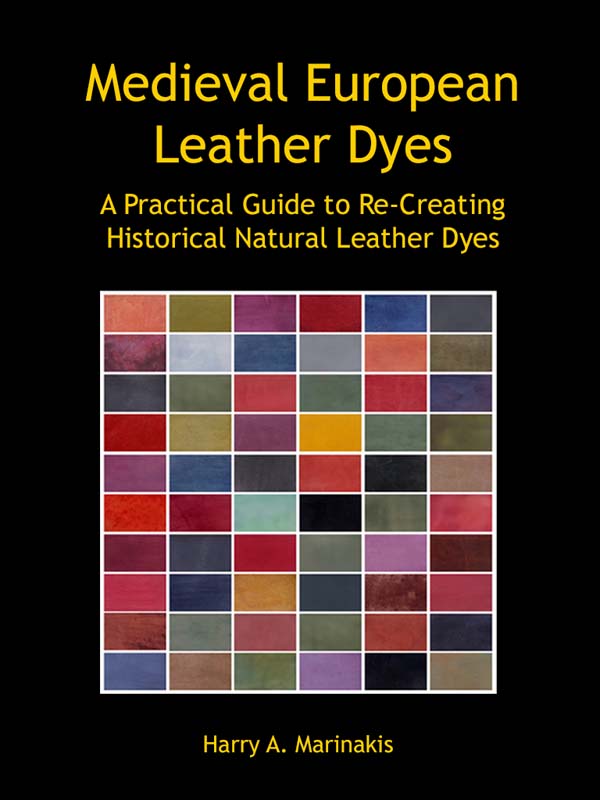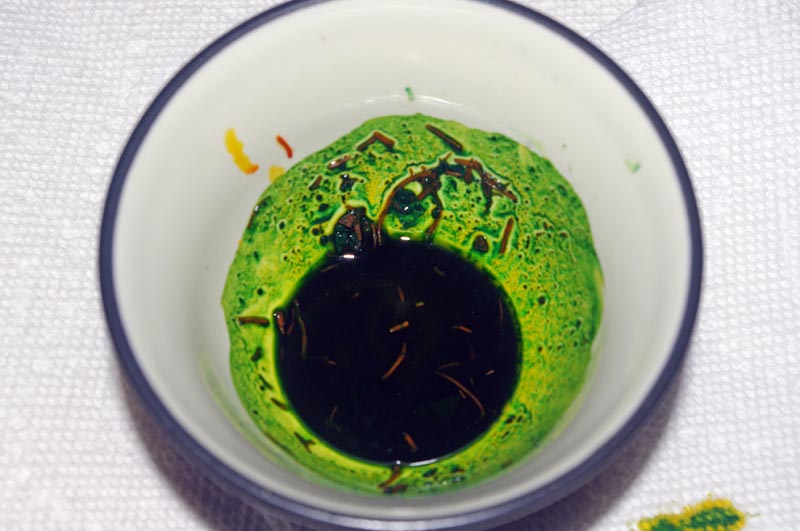I just finished the manuscript for the book, and it's in review now. Obviously I am not going to become a millionaire with a book like this, so I would like to produce something that's truly useful. Your input would help.
The book has about 150 pages front-to-back, with 40 short chapters.
-one chapter describing the dyer's manuscripts
-sixteen chapters on dye substrates
-seven chapters on various reagents
-fourteen chapters on the best 14 dyes in red, black, purple, blue, green, yellow, grey, and brown
-cross-references for all know medieval leather dyes
-glossary
-bilbiography
-index
I am excluding quite a bit of information, but I think that I am touching on all the key points, and the most illustrative dye recipes. As I state in the preface, "
The astute student will be able to apply this knowledge and re-create other dye recipes that are not included in this book."
Does this sound like anything that would be useful? Too much? Too little?
This book is a practical “how-to” guide to re-creating medieval European leather dyes for the historical craftsman, or anyone else who desires to bring natural historical colors to their leather projects. I have selected 14 of the best leather dye recipes from ancient medieval dyer’s manuscripts, and provided step-by-step instructions on how to re-create these historical dyes. The dye colors include red, black, purple, green, blue, yellow, black, grey, and brown.
Contents
1. Introduction
2. General Principles of Using Natural Leather Dyes
3. Medieval Dyer’s Manuscripts
4. Brazilwood
5. Cochineal Insects
6. Madder Root
7. Buckthorn Berries
8. Elderberry
9. Green Vitriol
10. Blue Vitriol
11. German Vitriol
12. Roman Vitriol
13. Shoemaker’s Dye (Atramentum)
14. Elemental Iron
15. Indigo Blue
16. Woad
17. Soap
18. Turmeric Root
19. Saffron Crocus
20. Chalk
21. Gallnuts
22. Gum Arabic
23. Lime
24. Lye
25. Roche Alum
26. Vinegar
27. To Make a Most Perfect Brazil (Plictho #17)
28. To Make a Good Brazil in Another Manner (Plictho #18)
29. To Dye Skins Black (Plictho #173)
30. To Make Black Tanned Skins (Plictho #203)
31. To Dye Skins of a Very Beautiful and Good Purple (Segreti #330)
32. To Make Very Fine Colour of Brazil (Plictho #174)
33. To Dye Skins Blue (Segreti #336)
34. To Dye Skins blue, or of the color of Azure (Piedmont #1)
35. To Dye Skins Green (Segreti #333)
36. Another green of Skins (Booke #15)
37. To Make Skins Yellow (Plictho #207).
38. To Make a Yellow Colour on Skins (Booke #9)
39. To Make a Skin Gray (Plictho #177)
40. To Dye and Tan Skins in Brown (Plictho #181)
Cross Reference by Manuscript
Cross Reference by Color
Cross Reference by Substrate
Bibliography
Illustration Credits
Dyer’s Glossary
Index
 Attachment: 85.59 KB
Attachment: 85.59 KB









